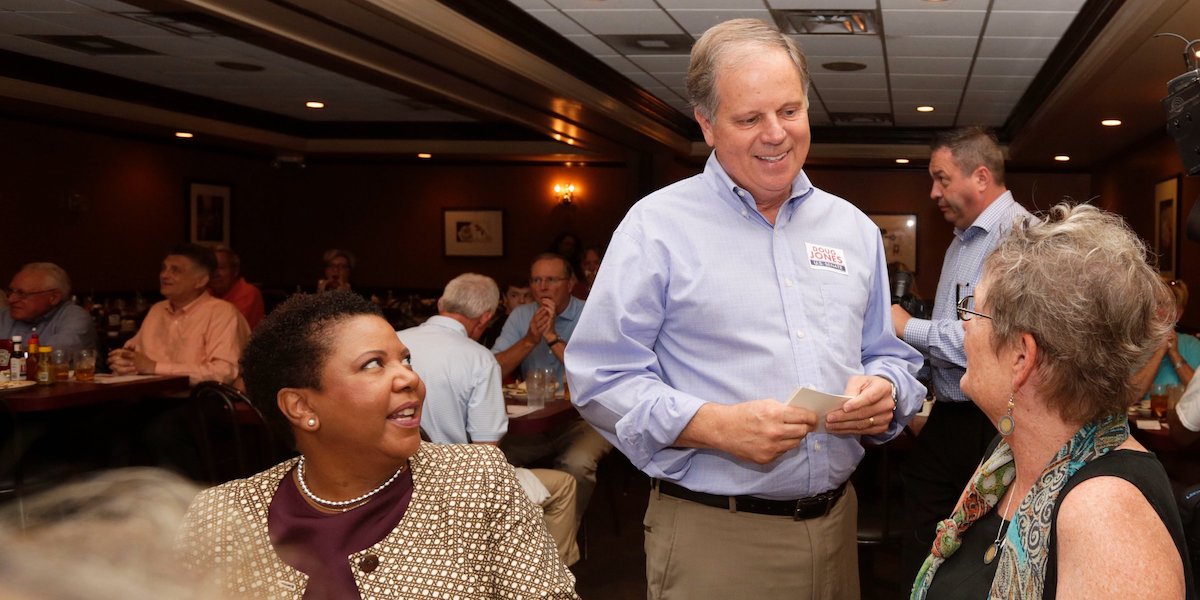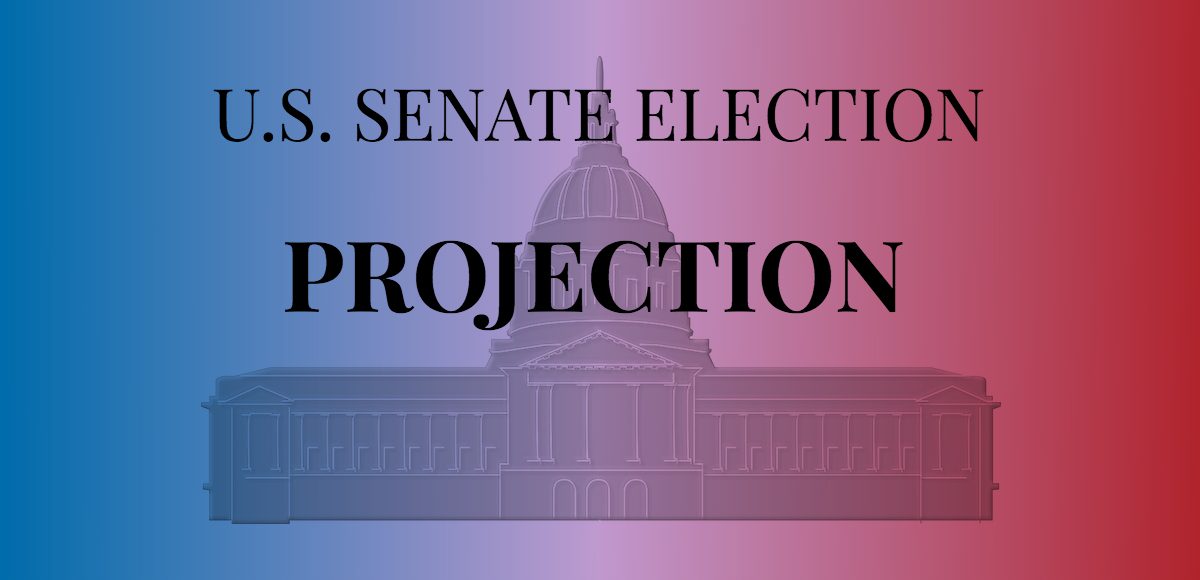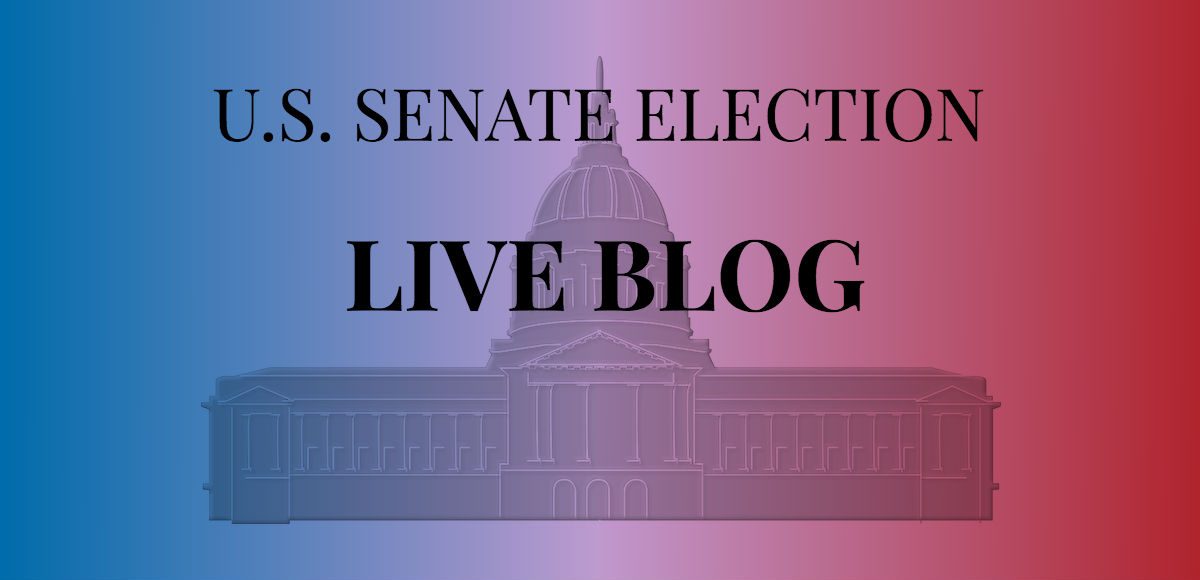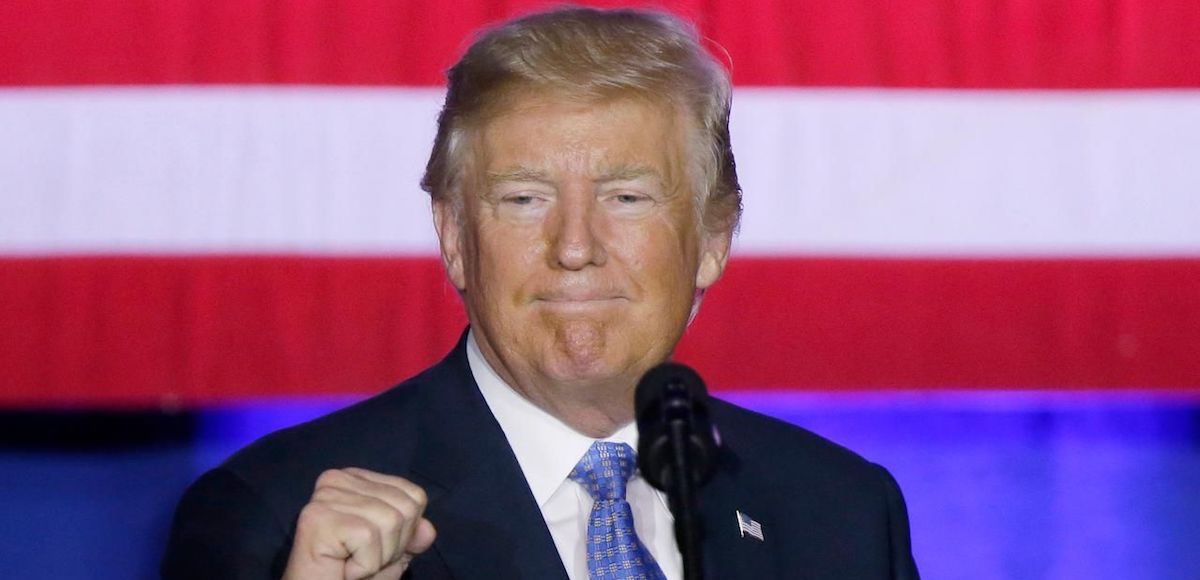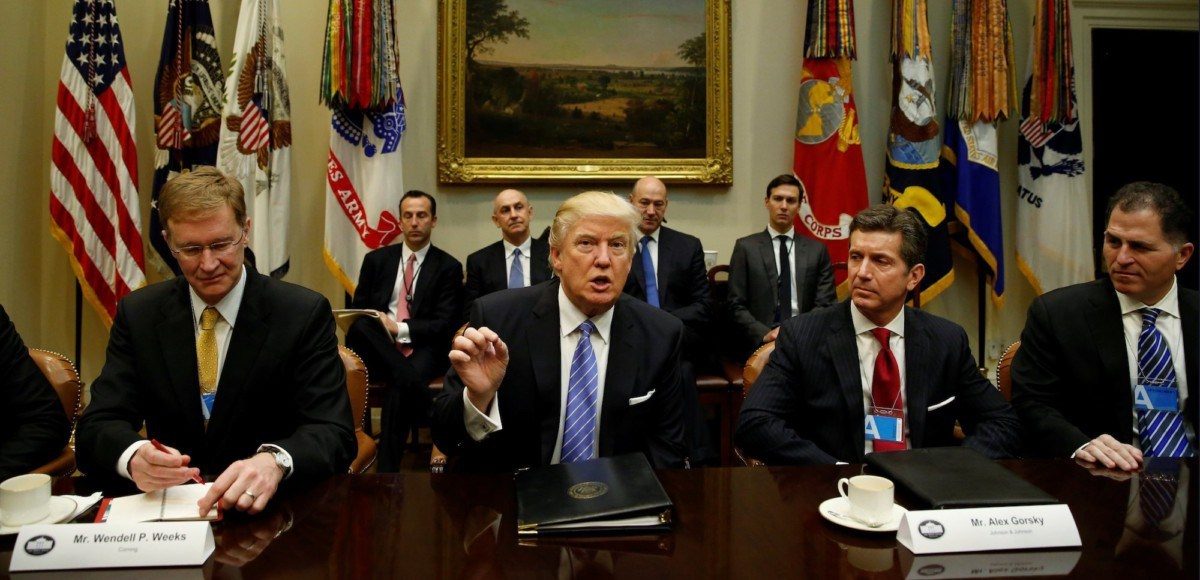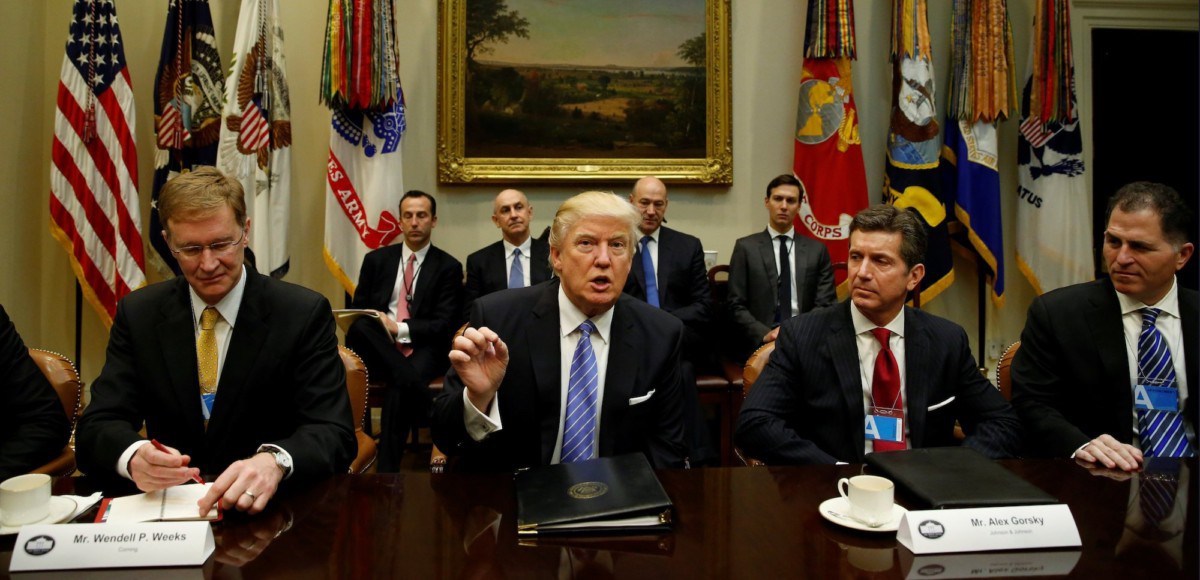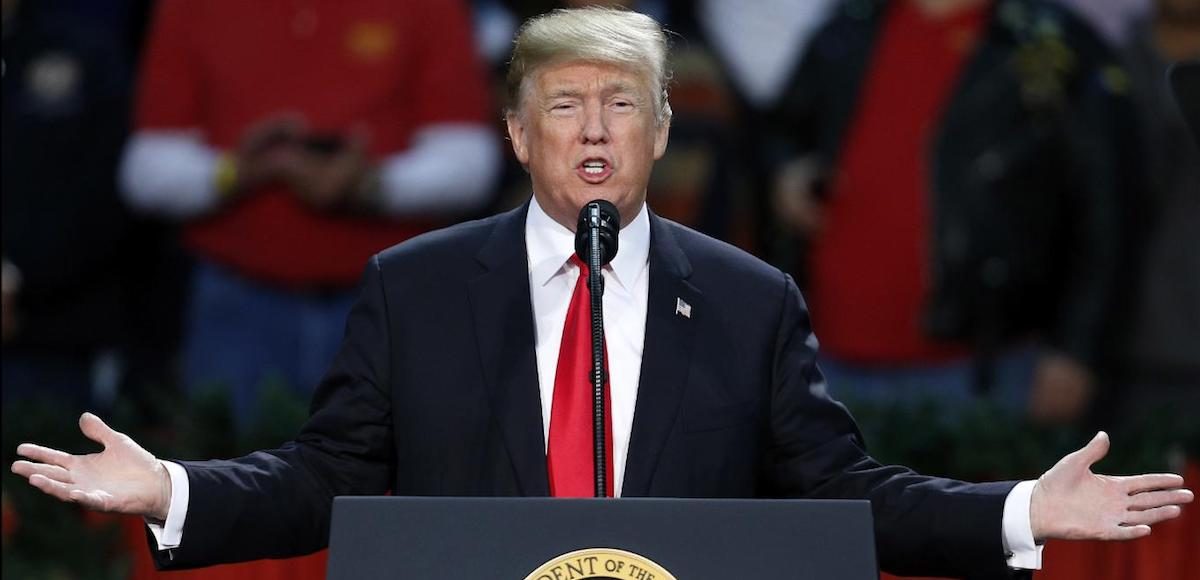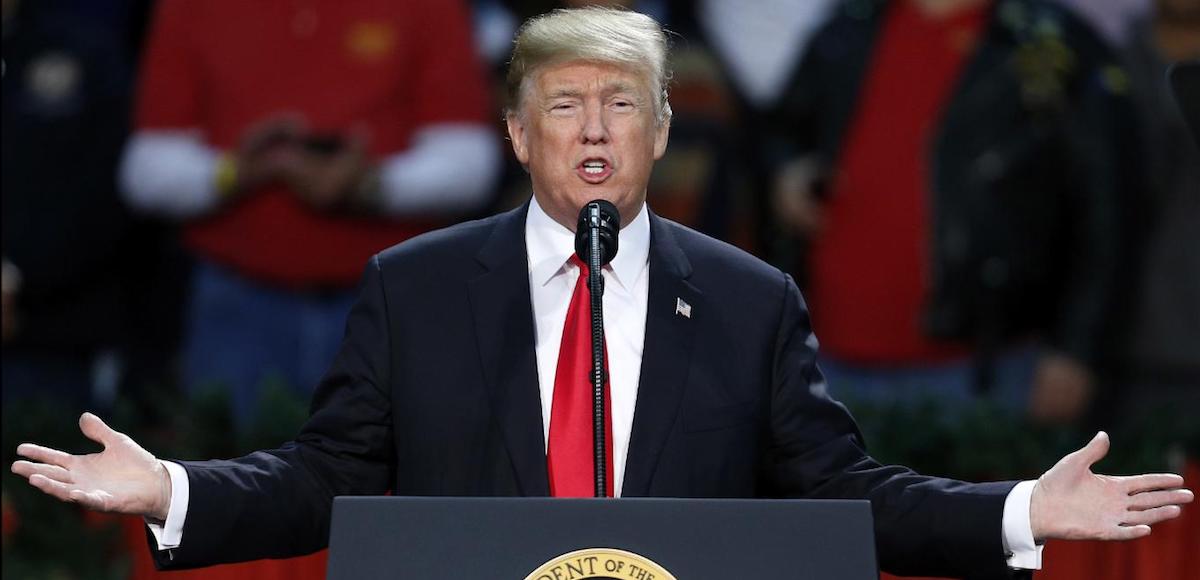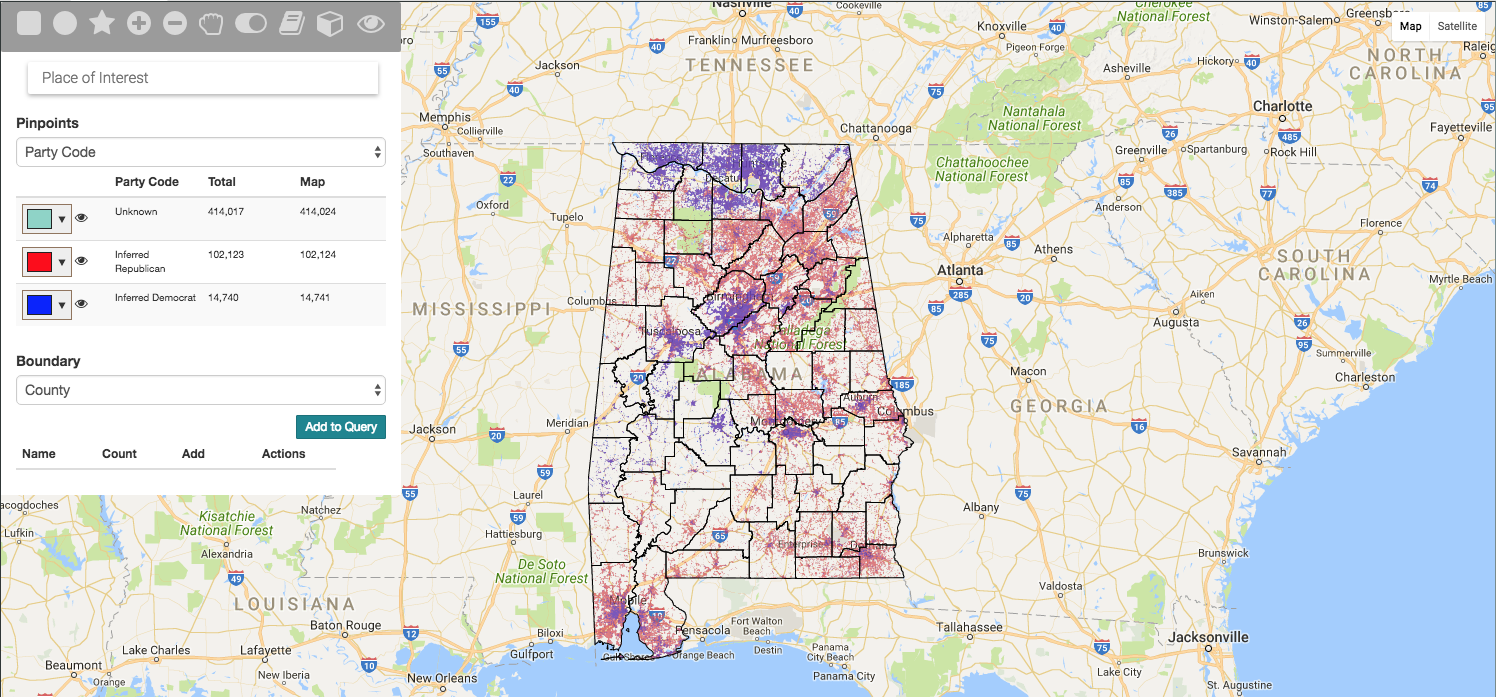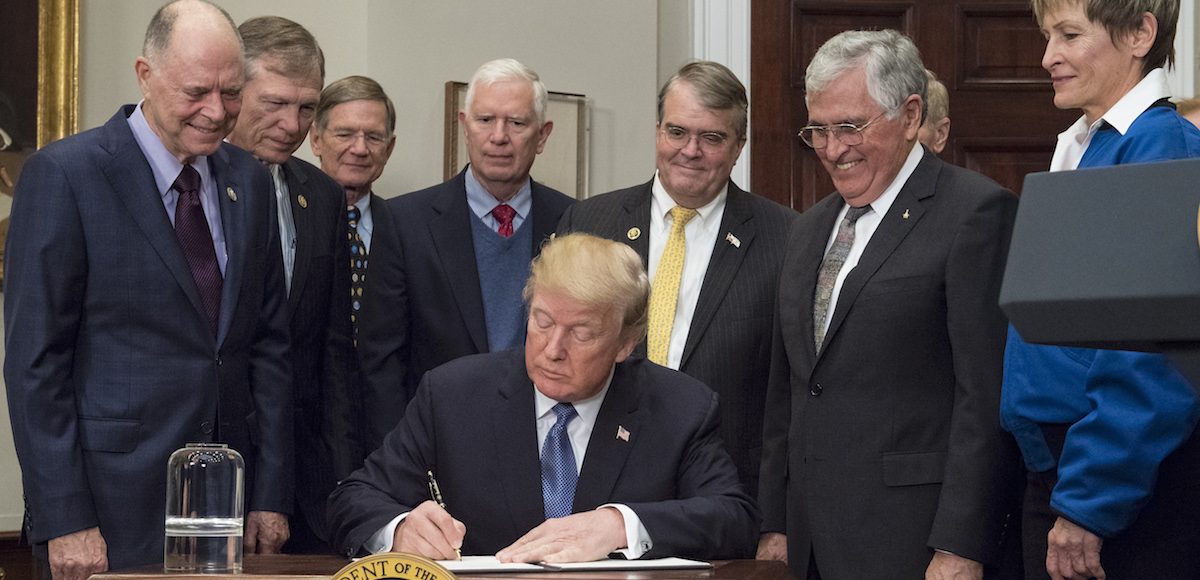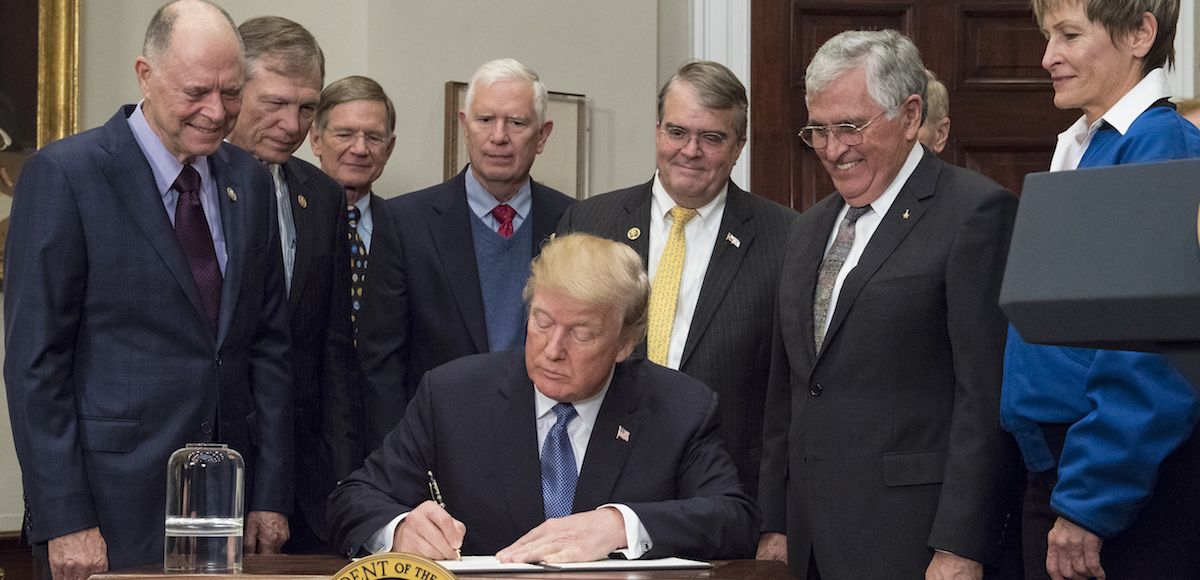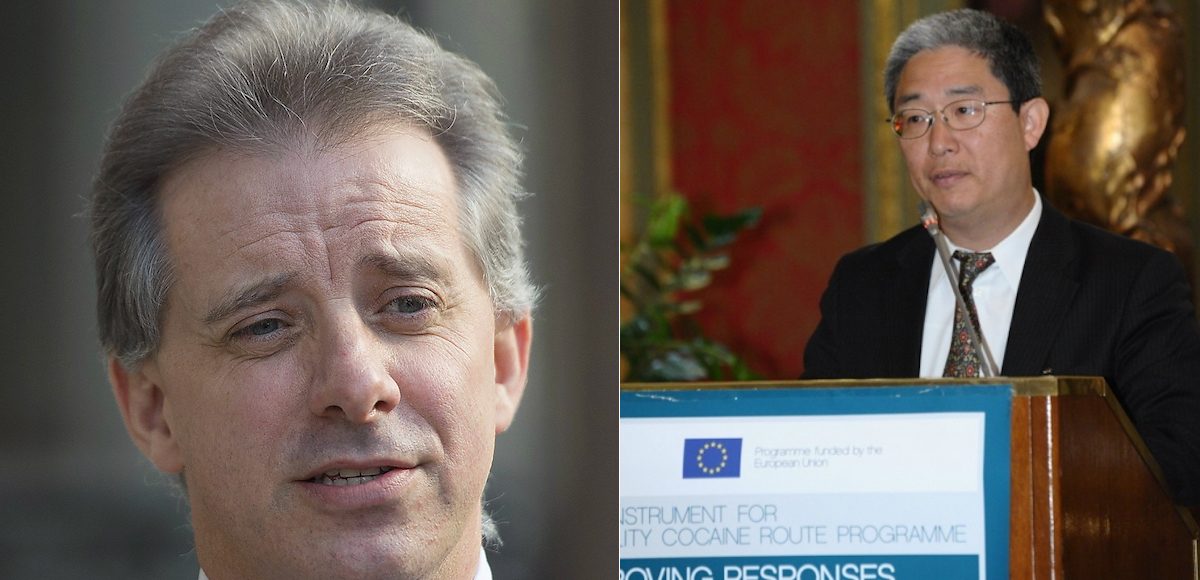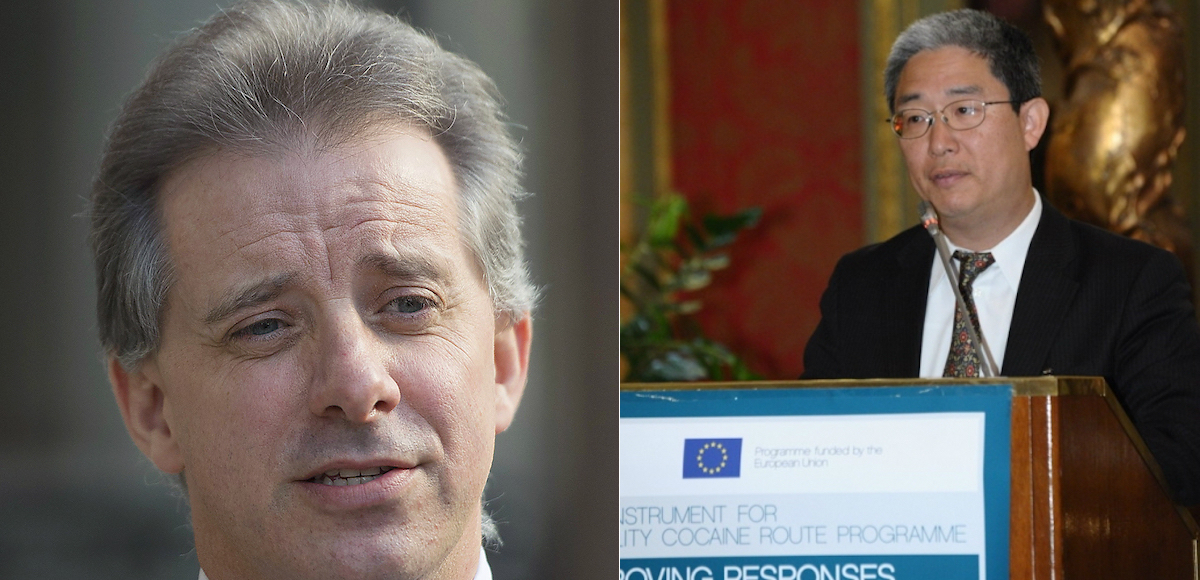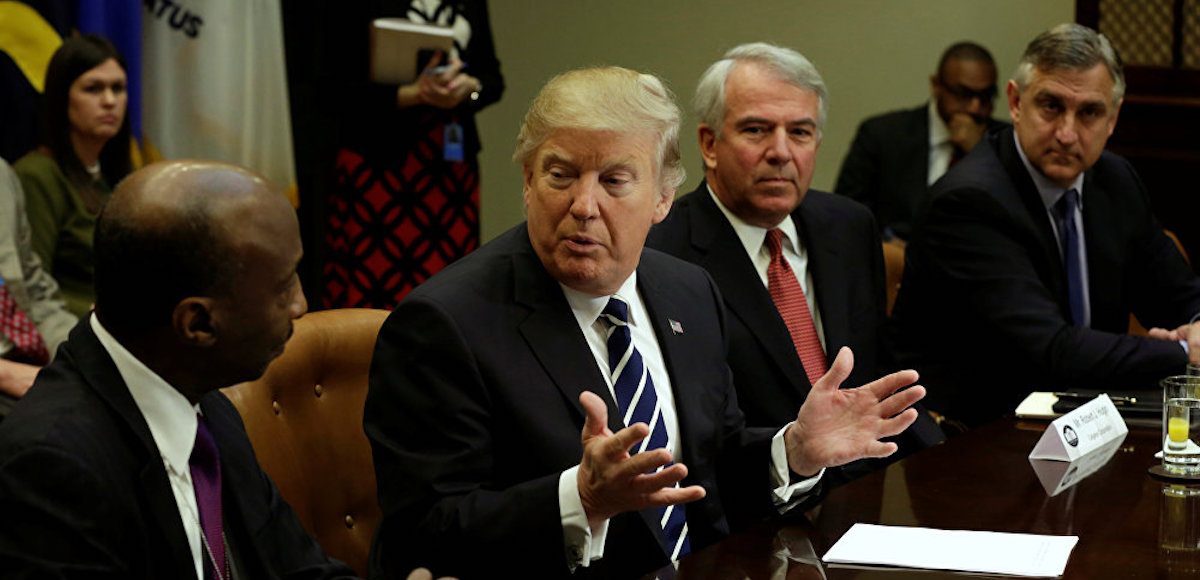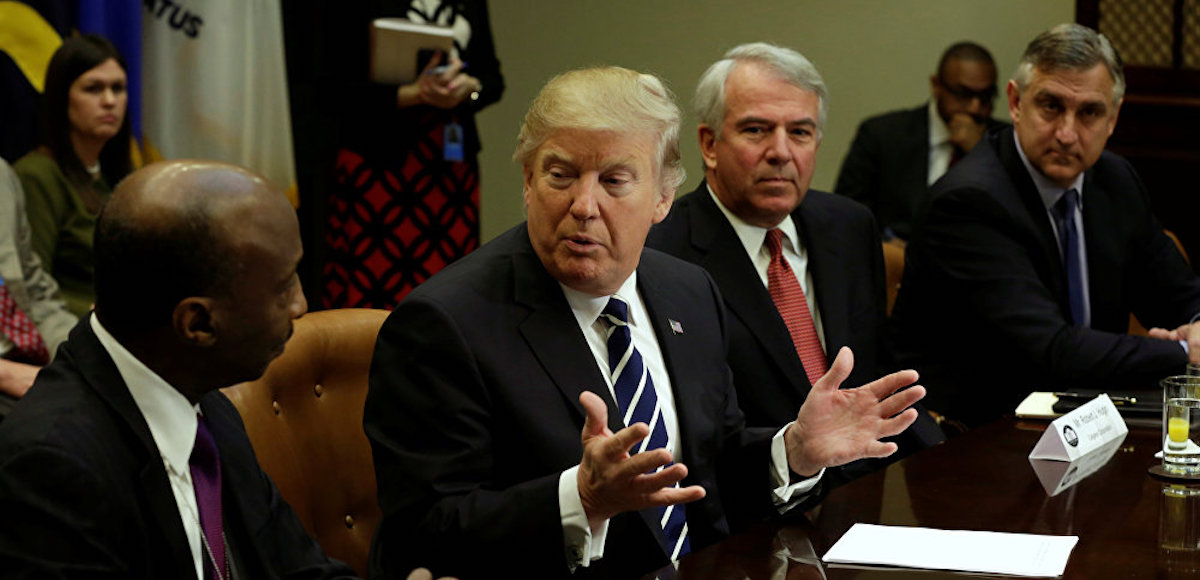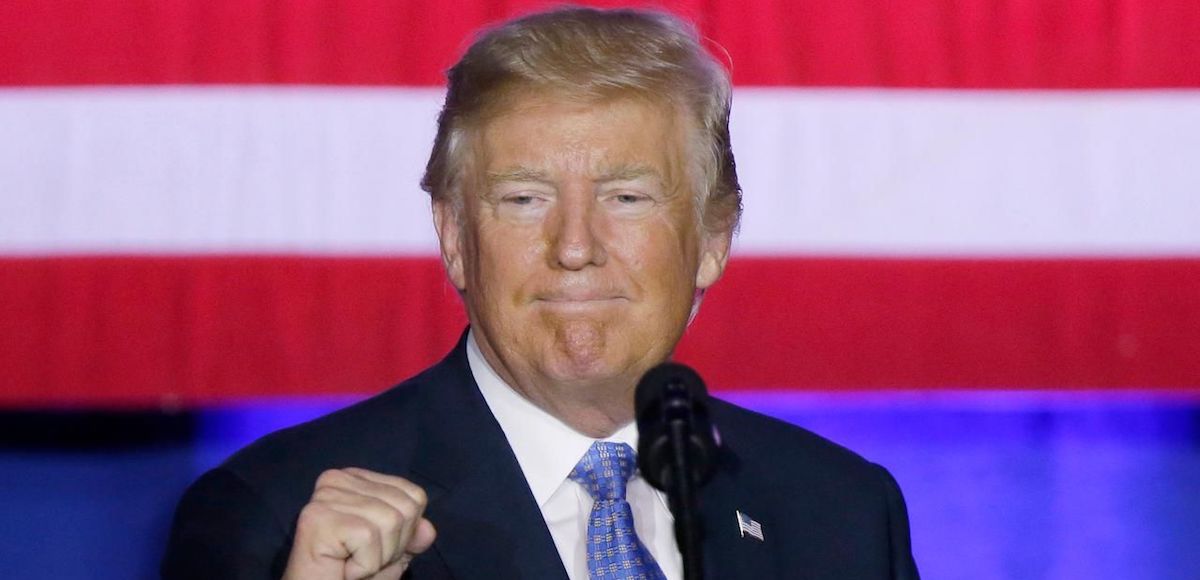
President Donald J. Trump delivers remarks on tax reform at the state fairgrounds in Indianapolis, Indiana, on Wednesday September 27, 2017. (Photo: PPD)
In February, Dow Chemical (NYSE:DOW) CEO Andrew Liveris said that the Trump Administration is “probably the most pro-business administration since the founding fathers.” His remarks came after attending a meeting with President Donald Trump, who hosted manufacturing leaders at the White House almost one month exactly after his inauguration.
“The opportunity of this economy to grow it even more than the 2% rate is there,” Mr. Liveris said, adding “what I’ve noticed about this president is that’s what he wants to do.”
Nearly 10 months later, forecast models project the U.S. economy to grow by 3% or higher in the fourth quarter (4Q) 2017. If the 4Q forecasts are matched or exceeded, it’ll mark the third straight quarter of economic growth at or above 3% for the first time since 2004. It also means the first year of economic growth under President Trump is all but certain to surpass the strongest under Barack Obama.
Nearly 10 months later, the prospects of tax reform are fueling historic levels of optimism and confidence, both for businesses and consumers.
The National Association of Manufacturers (NAM) said Monday manufacturers’ optimism in the 4Q of 2017 is the highest in the 20-year history of the Manufacturers’ Outlook Survey. The NAM said the survey has “risen to unprecedented heights” as a result of the tax reform bill.
“Four quarters of record-setting optimism don’t happen by accident,” said NAM President and CEO Jay Timmons. “It is the direct result of manufacturers witnessing a sea change in policymaking in Washington, D.C., empowering them to hire more, invest more and build more—all in America.”
Now, 94.6% of respondents say they are positive about their own company’s outlook, making this quarter’s optimism level the highest ever recorded.
Optimism has been at historically high levels throughout the year, averaging 91.8% in the four quarters of 2017, up from just 64.3% for the average in 2016. Those levels of optimism are warranted given the boom in job creation in the sector.
Since a recent low in November 2016, before President Trump was elected on a platform to protect the manufacturing sector, industry employment has increased by 189,000. The November jobs report conducted by the U.S. Bureau of Labor Statistics showed manufacturing added a robust 31,000 jobs.
The National Federation of Independent Business (NFIB) said small business optimism soared in November and is now closing in on the record high set in 1983. The Index of Small Business Optimism gained 3.7 points in November, largely the result of progress made by the U.S. House and Senate to pass the president’s signature overhaul.
“This is the second-highest reading in the 44-year history of the Index,” said NFIB Chief Economist Bill Dunkelberg. “The NFIB indicators clearly anticipate further upticks in economic growth, perhaps pushing up toward four percent GDP growth for the fourth quarter. This is a dramatically different picture than owners presented during the weak 2009-16 recovery.”
Again, these levels of optimism are warranted.
In a sign the U.S. economy is beginning to return to normal reliance on higher-paying, full-time jobs, small businesses (1 – 49 employees) added 50,000 jobs in the ADP National Employment Report for November. Mid-sized businesses with 50 – 499 employees added 99,000, while large businesses added only 41,000.
“The job market is red hot, with broad-based job gains across industries and company sizes,” Mark Zandi, chief economist of Moody’s Analytics, said.
The report also showed strong job creation in goods-producing sectors.
“The labor market continues to grow at a solid pace,” said Ahu Yildirmaz, vice president and co-head of the ADP Research Institute. “Notably, manufacturing added the most jobs the industry has seen all year.”
The Conference Board said consumer confidence exploded in October to a new 17-year high and September was revised higher to 126.2. The Consumer Confidence Index now stands at 129.5 (1985=100), up from 126.2 in October and easily topping the 124.5 median forecast.
“Consumer confidence increased for a fifth consecutive month and remains at a 17-year high (Nov. 2000, 132.6),” said Lynn Franco, Director of Economic Indicators at The Conference Board. “Consumers’ assessment of current conditions improved moderately, while their expectations regarding the short-term outlook improved more so, driven primarily by optimism of further improvements in the labor market.”
The Present Situation Index continued to increase from 152.0 to 153.9, while the Expectations Index rose from 109.0 last month to 113.3.
In October, the Survey of Consumers posted the highest pre-holiday reading in more than 10 years. The current expansion pace is the second-highest its been since the mid-1800s. The Survey of Consumers showed the preliminary reading in November signaled an expected gain of 2.7% in real consumption expenditures in 2018.
“Perhaps the most important changes in early December were higher income expectations as well as a higher expected inflation rate in 2018,” Richard Curtain, chief economist for the Surveys of Consumers said.
The closely-watched gauge of consumer sentiment has hit multiple records, multiple times this year. By nearly every economic indicator, the U.S. economy is finally on the precipice of an explosion of prosperity after 8 years of subpar growth in the post-World War II era. Only failure in Washington can hold it back now.
“Small business owners are paying very close attention to what is happening in Washington,” NFIB President and CEO Juanita Duggan said. “They continue to list taxes as their number-one problem, but they now have clear expectations that Congress and the President will address that problem. As long as Congress and the President follow through on tax reform, 2018 is shaping up to be a great year for small business, workers, and the economy.”
